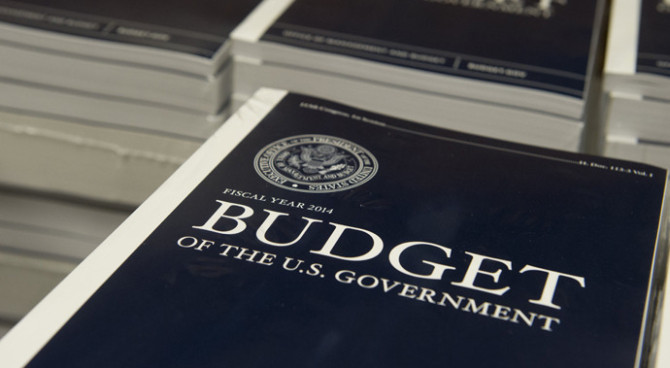Despite the federal government’s growing economic dominance, individual states still exercise substantial freedom in pursuing their own economic fortune — or misfortune. As a result, the states provide a laboratory for testing various policies.
In this election year, the experience of the states gives us some ability to look at the economic policies of the two presidential candidates in action. If a program is not playing in Peoria, it probably won’t work elsewhere. Americans have voted with their feet by moving to states with greater opportunities, but federal adoption of failed state programs would take away our ability to walk away from bad government.
Growth in jobs, income and population are proof that a state is prospering. But figuring out why one state does well while another struggles requires in-depth analysis. In an effort to explain differences in performance, think tanks have generated state-based economic freedom indices modeled on the World Economic Freedom Index published by The Wall Street Journal and the Heritage Foundation.
The Competitiveness Index created by the American Legislative Exchange Council (ALEC) identifies “16 policy variables that have a proven impact on the migration of capital — both investment capital and human capital — into and out of states.” Its analysis shows that “generally speaking, states that spend less, especially on income transfer programs, and states that tax less, particularly on productive activities such as working or investing, experience higher growth rates than states that tax and spend more.”
Ranking states by domestic migration, per-capita income growth and employment growth, ALEC found that from 1996 through 2006, Texas, Florida and Arizona were the three most successful states. Illinois, Ohio and Michigan were the three least successful.
The rewards for success were huge. Texas gained 1.7 million net new jobs, Florida gained 1.4 million and Arizona gained 600,000. While the U.S. average job growth percentage was 9.9%, Texas, Florida and Arizona had job growth of 18.5%, 21.4% and 28.9%, respectively.
Remarkably, a third of all the jobs in the U.S. in the last 10 years were created in these three states. While the population of the three highest-performing states grew twice as fast as the national average, per-capita real income still grew by $6,563 or 21.4% in Texas, Florida and Arizona. That’s a $26,252 increase for a typical family of four.
By comparison, Illinois gained only 122,000 jobs, Ohio lost 62,900 and Michigan lost 318,000. Population growth in Michigan, Ohio and Illinois was only 4.2%, a third the national average, and real income per capita rose by only $3,466, just 58% of the national average. Workers in the three least successful states had to contend with a quarter-million fewer jobs rather than taking their pick of the 3.7 million new jobs that were available in the three fastest-growing states.
In Michigan, the average family of four had to make ends meet without an extra $8,672 had their state matched the real income growth of the three most successful states. Families in Michigan, Ohio and Illinois struggled not because they didn’t work hard enough, long enough or smart enough. They struggled because too many of their elected leaders represented special interests rather than their interests.
What explains this relative performance over the last 10 years? The simple answer is that governance, taxes and regulatory policy matter. The playing field among the states was not flat. Business conditions were better in the successful states than in the lagging ones. Capital and labor gravitated to where the burdens were smaller and the opportunities greater.
It costs state taxpayers far less to succeed than to fail. In the three most successful states, state spending averaged $5,519 per capita. In the three least successful states, state spending averaged $6,484 per capita. Per capita taxes were $7,063 versus $8,342.
There also appears to be a clear difference between union interests and the worker interests. Texas, Florida and Arizona are right-to-work states, while Michigan, Ohio and Illinois are not. Michigan, Ohio and Illinois impose significantly higher minimum wages than Texas, Florida and Arizona. Yet with all the proclaimed benefits of unionism and higher minimum wages, Texas, Florida and Arizona workers saw their real income grow more than twice as fast as workers in Michigan, Ohio and Illinois.
Incredibly, the business climate in Michigan is now so unfavorable that it has overwhelmed the considerable comparative advantage in auto production that Michigan spent a century building up. No one should let Michigan politicians blame their problems solely on the decline of the U.S. auto industry. Yes, Michigan lost 83,000 auto manufacturing jobs during the past decade and a half, but more than 91,000 new auto manufacturing jobs sprung up in Alabama, Tennessee, Kentucky, Georgia, North Carolina, South Carolina, Virginia and Texas.
So what do the state laboratories tell us about the potential success of the economic programs presented by Barack Obama and John McCain?
Mr. McCain will lower taxes. Mr. Obama will raise them, especially on small businesses. To understand why, you need to know something about the “infamous” top 1% of income tax filers: In order to avoid high corporate tax rates and the double taxation of dividends, small business owners have increasingly filed as individuals rather than corporations. When Democrats talk about soaking the rich, it isn’t the Rockefellers they’re talking about; it’s the companies where most Americans work. Three out of four individual income tax filers in the top 1% are, in fact, small businesses.
In the name of taxing the rich, Mr. Obama would raise the marginal tax rates to over 50% on millions of small businesses that provide 75% of all new jobs in America. Investors and corporations will also pay higher taxes under the Obama program, but, as the Michigan-Ohio-Illinois experience painfully demonstrates, workers ultimately pay for higher taxes in lower wages and fewer jobs.
Mr. Obama would spend all the savings from walking out of Iraq to expand the government. Mr. McCain would reserve all the savings from our success in Iraq to shrink the deficit, as part of a credible and internally consistent program to balance the budget by the end of his first term. Mr. Obama’s program offers no hope, or even a promise, of ever achieving a balanced budget.
Mr. Obama would stimulate the economy by increasing federal spending. Mr. McCain would stimulate the economy by cutting the corporate tax rate. Mr. Obama would expand unionism by denying workers the right to a secret ballot on the decision to form a union, and would dramatically increase the minimum wage. Mr. Obama would also expand the role of government in the economy, and stop reforms in areas like tort abuse.
The states have already tested the McCain and Obama programs, and the results are clear. We now face a national choice to determine if everything that has failed the families of Michigan, Ohio and Illinois will be imposed on a grander scale across the nation. In an appropriate twist of fate, Michigan and Ohio, the two states that have suffered the most from the policies that Mr. Obama proposes, have it within their power not only to reverse their own misfortunes but to spare the nation from a similar fate.
Mr. Gramm is a former Republican senator from Texas. Mr. Solon founded the consulting firm Capitol Legistics.


